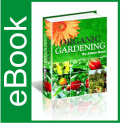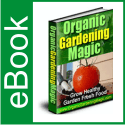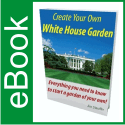Planning a Vegetable Garden
Planning a Vegetable Garden
Article by Timothy Samuel
Here’s all you need to know about starting your first home vegetable garden. Regardless of where one lives, growing conditions are bound to be different from the conditions described in most Gardening books. To plan a successful Garden, ask some questions. Which vegetables grow well in this area? What soil types are common? Are there unique conditions in the Garden to consider, for example, high winds, compacted soils, poor drainage and wet spots? Finally, what are the first and last frost dates and the growing season? Later as skills develop add more difficult Crops such as small fruits and perennial vegetables, and add more area to the Garden’s size. When selecting plants of a first garden, keep in mind several suggestions. So before I even get started the garden is already divided into four equal quadrants that are easy to identify and keep separated. When planning the layout of the vegetable beds there are four main considerations that I keep in mind to guide my planting and growing strategy. If you plant a particular crop or family of related crops in one raised bed the previous year, it goes in a different area or garden bed the next time around. A very important consideration when planning your vegetable garden is to think about the size, height, and growth habit of the crops and to plant according to these characteristics. Getting this right will enable you to employ succession planting techniques to grow two or three separate harvests in the same space that many gardeners grow a single vegetable crop. When the bulbs are harvested in mid summer the bed can then be used to plant fall crops such as kale, mustard greens, cabbage, broccoli, and other cool weather vegetables and planning ahead the same area can be used to grow tomatoes, peppers, and eggplants can be replanted with your crop of fall garlic. In September after the tomatoes have slowed production, pull the vines, add a layer of compost to the bed and use the area to plant garlic to over-winter, or sow transplants of other fall and winter vegetables. There are many unique vegetable varieties available that are not only tasty, but can also add an ornamental flavor to the vegetable garden with their unusual shapes, textures, and colors. There are several factors to consider when planning what will be grown in the vegetable garden. Growing from seed gardeners should consider whether they are willing and able to grow any of their plants from seed under fluorescent lights. In cooler climates, starting seeds indoors helps to extend the growing season and provides the gardener with more control over what specific varieties of tomatoes, peppers, beans and other vegetables will be cultivated. When planning the vegetable garden, decide which plants will be grown from seed, and which plants will be purchased as seedlings. Gardeners who grow vegetables may also enjoy growing fruit in the garden. Planting a fruit tree such as apple, pear or cherry is also a satisfying addition to the vegetable garden. Gardeners tend to neglect the plants they don’t like to eat. To avoid being wasteful, gardeners should grow only those edible plants that are regularly eaten in their household. Although most vegetable plants grow in varying shades of green, some heirloom vegetables grow in a wide variety of colors. Incorporating edible flowers such as nasturtiums or violas also adds a touch of color to the vegetable garden. When planning the next seasons vegetable patch, gardeners will also need to consider the time and energy they have available to spend working to maintain the garden, as well as any storage space required once the baskets of fruit and vegetables begin to be harvested. Sunlight full sun is the preferred exposure for growing most vegetables. Install your beds away from trees or other objects that could shade the garden. Remember that trees are plants too and locating garden beds too close to tree roots will place your vegetables in competition with trees for water and nutrients. Windbreaks trees, fences, walls, even hedges can be used to protect young plants, as long as they are far enough away from your garden not to cause shade or competition problems. The size of your garden depends on the vegetable needs and wants of you and your family, what land is available to you, water requirements, and how hard your want to work at it. Many people enthusiastically plant gardens larger than their needs and their abilities to care for them, and then realize, late into the season, that their vegetable garden has just gotten away from them. Spinach, radishes, leaf lettuce and other like vegetables need relatively little space. There are new bush varieties that are constantly being developed for these types of plants that can be used in small gardens. Placement if you are planting corn in your garden, plant it on the north side, so it wont shade other plants as it grows taller. Map your garden when your deciding what goes where, so next year, you can rotate some crops. Successful garden all deepens on you and your planning so get started on your new garden. For more information on gardening go to http://www.Teegoes.org
About the Author
Timothy Samuel I live in Wilmington,De enjoy writing on many topics from food to travleing. And you hope my articles be enjoyable and helpfull to all.

 December 14, 2011
December 14, 2011 







